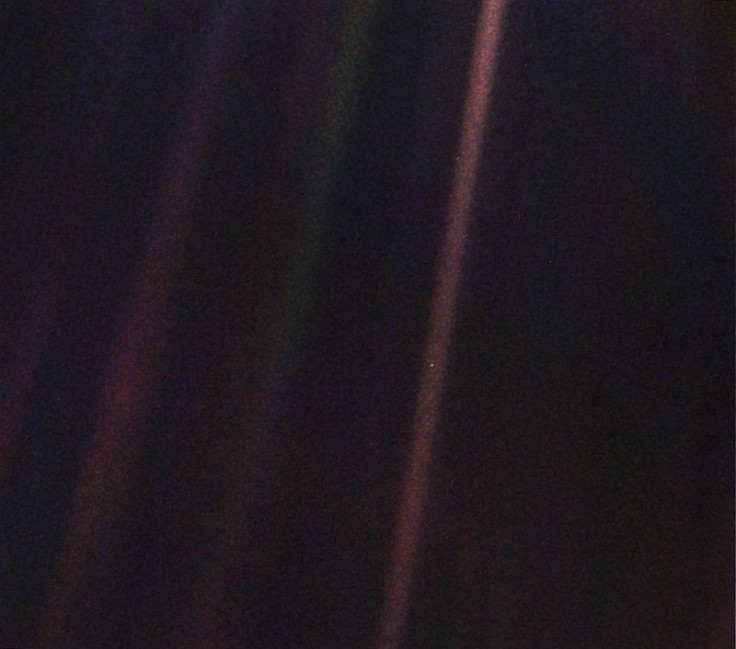Iconic 'Pale Blue Dot' Image Of Earth Gets A 30th Anniversary Makeover
KEY POINTS
- The 'Pale Blue Dot' image was taken by Voyager 1 on Feb. 14, 1990
- The iconic image is turning 30 this year
- For its anniversary, NASA released an updated version of the image
- The update used modern technology whilst still respecting the original image
On Feb. 14, 1990, the plan was to shut off Voyager 1’s cameras in order to conserve power. However, just 34 minutes before it was shut off, it took what turned out to be one of the most iconic images from the Voyager 1 mission. Nicknamed the “Pale Blue Dot,” the image shows how small the Earth is in the vastness of space.

For its 30th anniversary, NASA released an updated version of the image, still showing the Earth as a speck that occupies less than a pixel but updated with modern image-processing software and techniques this time.

While both images are false-color views, perhaps the most obvious difference between the two is that the sunbeams on the updated image appear white instead of reddish and green. The new image is also markedly less grainy compared to the original, possibly because each color channel’s brightness was balanced.
According to NASA, the updated version revisits the iconic image using modern techniques while also respecting the original intent of those who planned the image.
By showing the Earth as a tiny, pale blue dot in the vastness of space, the images display how vulnerable, fragile and irreplaceable our planet is and, how it occupies such a small place in the Universe, something the Voyager imaging team wanted to show.
Pale Blue Dot
Interestingly, looking back and taking a photo of the solar system was not a part of the plan for Voyager 1. In fact, the Voyager team turned down several requests to take the photo because of the limited resources and it took eight years of convincing and six requests before it was finally approved. When it did, however, the image turned out to be one of the most iconic ones from the mission.
Voyager 1 also took a series of 60 images of our solar system, creating the first and, so far, the only photograph of our solar system. After it did, it shut its cameras off permanently. As of 2020, Voyager 1 is still functional but it can no longer take photos.
Voyager 1, Voyager 2 and New Horizons are so far the only spacecraft to observe our solar system from such a distance, but Voyager 1 is the first and so far only one to take a photograph of it. Two other spacecraft, Pioneer 10 and Pioneer 11, also had a similar vantage point as they went into interstellar space but they were unable to get similar shots.
© Copyright IBTimes 2024. All rights reserved.






















